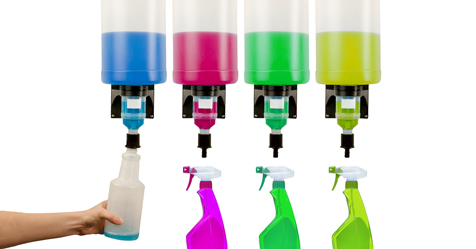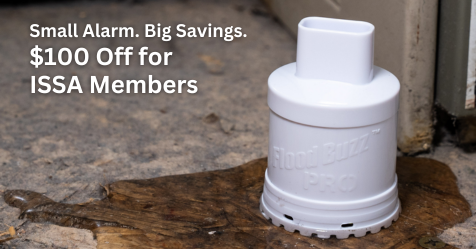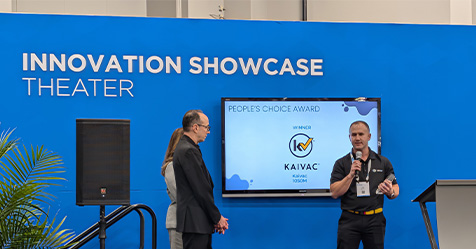Motivation High for Second Day of ISSA Show North America
Tuesday’s educational and speaker sessions at ISSA Show North America 2021 kicked off with a welcome from ISSA Executive Director John Barrett. “You are looking at the most surprised guy in Las Vegas that we are here,” he said, thanking everyone in the audience for attending. “I’m confident for those who made the journey, the reward will be great.”
Barrett highlighted five themes for ISSA over the past year:
- Growth is good: “People learned during the pandemic that ISSA offered the truth and they came in droves,” Barrett said.
- GBAC Matters: The Global Biorisk Advisory CouncilTM (GBAC), a Division of ISSA, went global this year, with over 4,000 organizations depending on GBAC certification to keep facility residents safe, according to Barrett
- We’re getting louder, or at least easier to hear in Washington, D.C., Barrett said, explaining ISSA’s advocacy efforts are paying off for members. “Our hands are all over the relief legislation.”
- Barrett told the audience “We have your back,” in reference to all the services the association offers and continued to offer to its members during the pandemic.
- Finally, Barrett quipped “There goes the neighborhood,” reminding all members ISSA headquarters have moved from Northbrook, Illinois, to Rosemont, Illinois, conveniently located by O’Hare International Airport in Chicago. He encouraged members to visit ISSA headquarters in order to attend courses and conduct other business. “You won’t even need to rent a car to get here from the airport,” he said.
Following Barrett, motivational speaker Morris Morrison had people on their feet grooving to rap, country, Motown, and rock music as he spoke about being open minded to trying news things, such as listening to different types of music. He acknowledged the efforts that led to the industry thriving during the coronavirus pandemic and encouraged his audience not to be victims, take ownership of their lives, and not to expect anyone to give them anything.
Educational sessions continued in full swing the entire week. In the session Trending Topics That Influence Environmental Services in the Healthcare track, four panelists representing health care facilities, hospitals, and medical office buildings discussed technical innovations, trends, and current technology that they are using to advance their environmental science (EVS) departments.
From ultraviolet (UV) light robots to self-propelling brooms to artificial intelligence, panelists discussed the benefits of using new technology to achieve the best results in cleaning, reduce health care-acquired infections (HAIs), and ultimately protect and save patient lives.
UV robots were the center of discussion as panelists touted how easy they were to use and the cost-savings they encountered from employing them in their facilities.
Panelist Eric Bates, who formerly served as director of Environmental Services of Jewish Ovation in Milwaukee, Wisconsin, said the UV light robot his facility invested in paid for itself in 18 months and the second one they acquired paid for itself in half the time. His robots were managed by the maintenance department and ran 24 hours a day in several areas of the building. “When you look at purchasing this technology, really look at the service side of things,” he cautioned. He said the robot provider his facility chose was responsive to maintenance needs the same day problems occurred.
Bates said the biggest concern among his staff was that the robot was going to take jobs away.
Others said training on how to use the robot is an initial concern until users realize how easy it is to use.
“The training is very easy. My staff caught on very quickly,” Bates said.
Panelist Charline Gooley, superintendent of Building Services at University of Illinois Medical Center, agreed the machines are very easy to use, but she cautioned they don’t replace routine cleaning. “It’s a great tool. It does not replace your program. It’s an addition to your program,” she said.
Panelist Debbie Good, of AMA Consulting, said there will be resistance from staff and others to using new technology and EVS managers should be prepared for resistance to those who aren’t ready for change.
“There will be resistance,” she said. “But you also need to recognize we are moving forward. We need to recognize there will be some pushback.”
To meet the resistance and get more buy-in from administration, managers will be able to point to data to support how new technology is directly related to lower HAIs rates in their facilities.
“The UV robot takes [cleaning] up to the next level and sustains it at that level,” Bates said.


